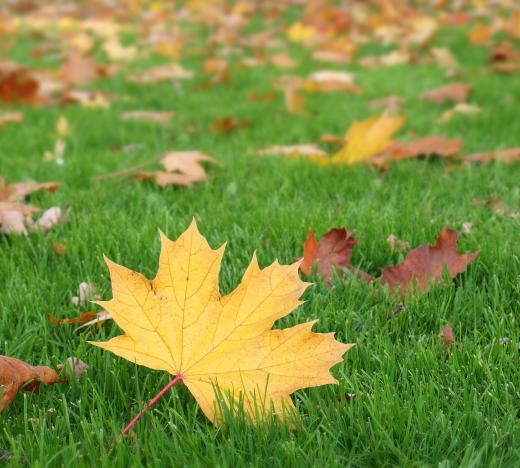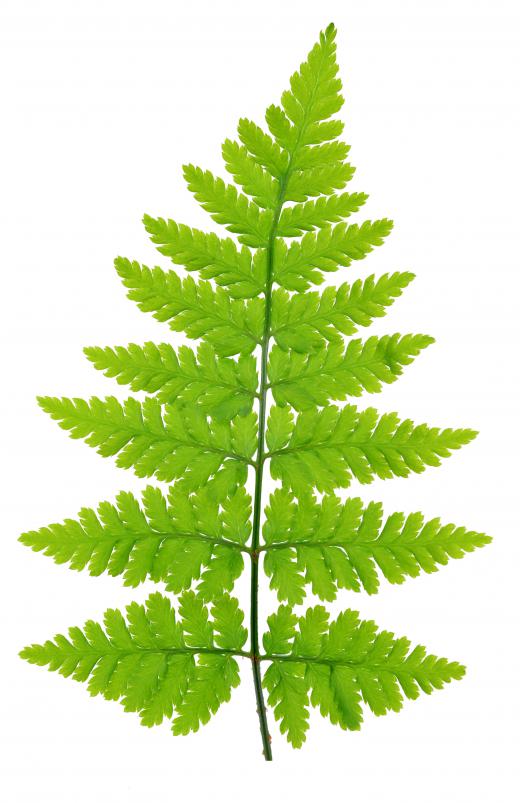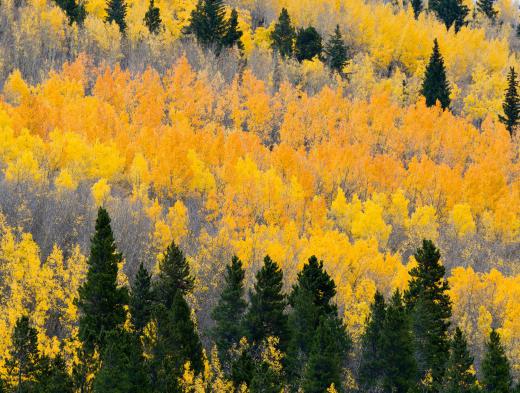What is Forest Ecology?
Forest ecology is the science of how organisms react with each other, and interact with the environment of a forest ecosystem. This particular field of study is very important for those who are concerned about forest conservation. Without good data on the forest, what makes it healthy or unhealthy, there is no way a sustainable plan can be put into place. An ecologist in this field may work for a university, park service or even a private corporation.
Those involved in forest ecology are hoping to find conclusions to a number of issues. Studies may include the importance of both old growth and new growth forests, the threat level of invasive animal and plant species, and the impact of human activity on the local environment. In some cases, depending on the size of the forest, the ecologist may need to consider data spanning several zones or biomes. Though these distinct areas may seem unrelated, but they all may point to the overall health of a forest.

Forest ecology requires a great deal of time recording the different species found in the system. Often, these data points will be compared with data collected in previous years. This comparison should provide a good idea for what the long-term trends of the area tend to be. A reduction of species, or an increase in the number of species may be cause for special concern.

While some may believe that species diversification is a good thing, anyone involved in forest ecology knows it must be the right kind of diversification. Invasive species of plants and animals may be able to decimate native populations, thus totally changing nearly all species found in the forest ecosystem in a matter of decades. While some may consider this a natural course of nature, others blame humans for the introduction of certain species. This can lead to a very unnatural result.

Once the species have been cataloged, and trends studied, the next step is to determine whether the changes are part of a natural maturation in the forest ecology, or the result of unnatural processes. This is partly determined by looking at the number of non-native species and understanding the changes that take place in forests over time. As canopies become more dense, for example, the number of ferns, and other ground cover vegetation, will decrease due to a lack of light. This is to be expected.

If the changes are considered unsustainable, or unnatural, the ecologist may be asked to come up with a plan to restore the health of the forests. In some cases, there may be no solution as the processes and species involved may have become too ingrained to change. In other cases, there may be techniques that can restore a more natural forest ecology.
AS FEATURED ON:
AS FEATURED ON:














Discussion Comments
What are the education requirements to become a Forest Ecologist?
@ FrameMaker- I have a couple of forest types that you missed. Mangrove forests are a special type of forest that grows near a body of saltwater. The term can be used to refer to any plant that is tolerant to salt water, not just mangrove trees. These forests often act as important barriers between the oceans and the land. They protect form erosion and storm surges. Mangrove forests can also act as natural filters, removing toxins from the water and protecting fragile ecosystems.
The Other type of forest that I can think of is a Mediterranean forest. These types of forests circle the Mediterranean Sea, the temperate coastlines of the East Pacific, and the western coast of Australia. These forests are composed mostly of evergreens with a fair mix of hard and softwoods.
@ GlassAxe- Montane/Cloud forests- These forests can be tropical, subtropical, or temperate. A fines mist form the cloud layer supplies nearly all the water in these forests.
Coniferous Forests- These pine forests circle the Earths arctic and Antarctic regions. They are made up exclusively of coniferous trees.
Sub-Tropical Forests- These forests are made up of hardy drought resistant species, and are to the south and north of the tropics.
Tropical Forests- These forests are the dense tropical rainforests that span the equator. These forests are the biggest stores of the planet's biodiversity.
What are the different types of forests, and what are their characteristics? I need to build a model of a forest, but I do not know what type of forest I want to build my model around. I have only been to forests filled with deciduous and pine trees.
Post your comments